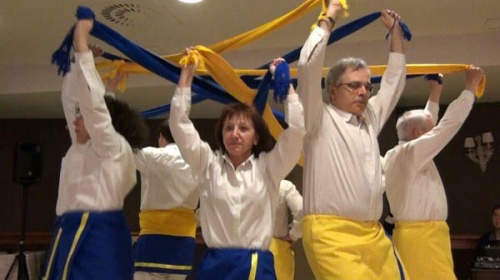Esbart Espiga d'Or
The Esbart Espiga d'Or was set up in 1983 to encourage the teaching and promotion of Catalan dance. From the beginning it has devoted itself to performing traditional dances and it now has over a hundred in its repertoire, taken from every Catalan-speaking land.
The Espiga d'Or's first home was in the Guinardó neighbourhood. But since 1983 it has had four different centres: the Salut, CAT, Club Helena and, finally, the Centre Sant Pere Apòstol del Casc Antic.
In 1996 they organised the 1st Trobada d'Esbarts Dansaires de Catalunya (MontBarça), a national gathering in which 16 traditional dance groups took part. Every second Sunday in June they take part in the Montserrat meet, and during the year they also perform on their own and with other groups.
The Esbart Espiga d'Or has two sections, dancers and bastoners. The dance corps consists of active dancers, who regularly attend the rehearsals and performances, and there is also a veterans' corps of current and former Espiga d'Or dancers, and their supporters, who are all over 40 and belong to the Roda d'Esbarts Veterans Catalònia. The stick dancers' corps, known as the Bastoners del Casc Antic, take part in street cercaviles and festes independently of the Esbart as well as in the shows the group performs from its repertoire. There is also an esbart infantil that performs on its own and takes part in the Roda d'Esbarts Infantils Catalònia.
The members of the dance corps wear costumes appropriate to the period, region and social class of each dance, giving them a great deal of variety. The colours of the bastoners are yellow and blue: some of the dancers wear a blue sash, short yellow skirt and a diagonal yellow neckerchief (both with a blue line on), while the others combine the colours in the opposite way: a blue neck scarf and skirt with a yellow line, and a yellow waistband.




